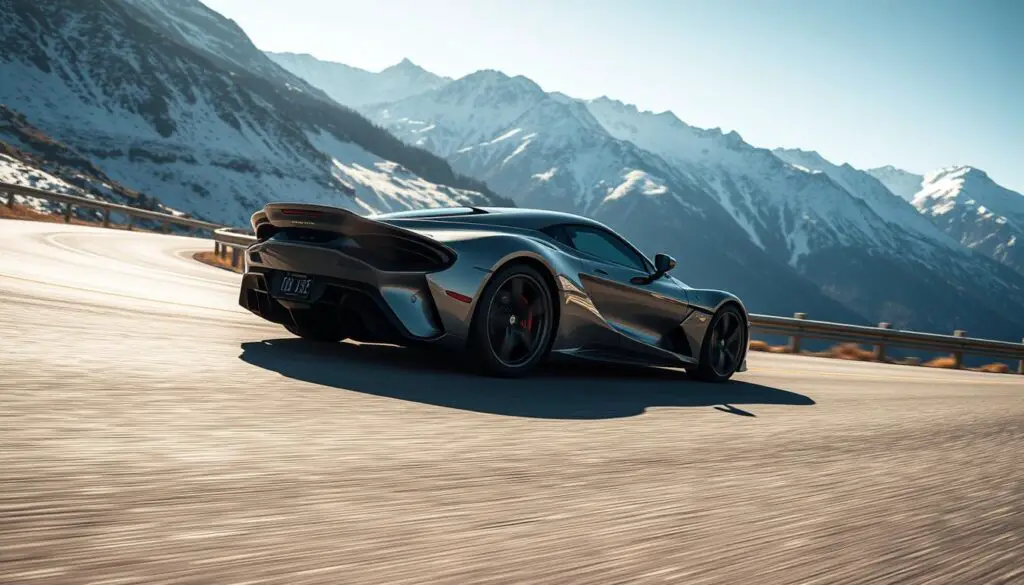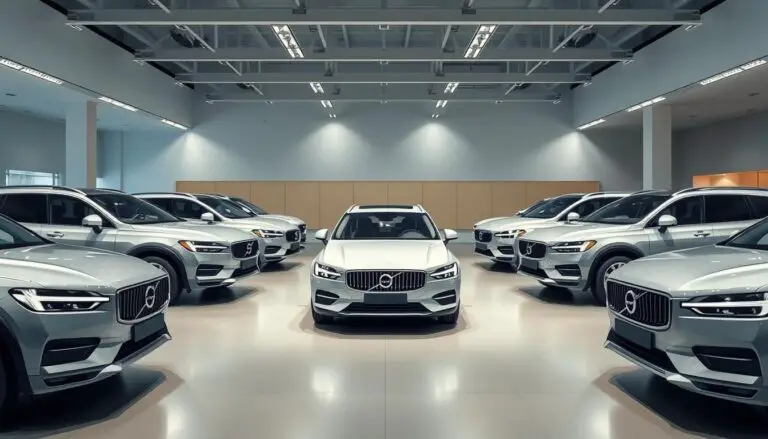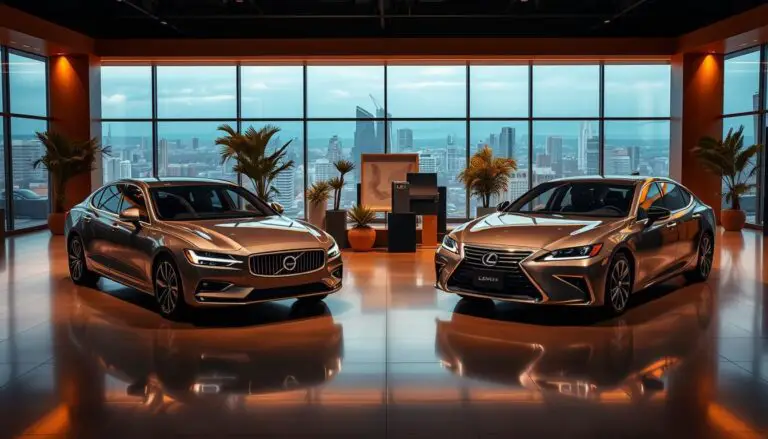The luxury vehicle market is dominated by several high-end brands, but few have the Swedish heritage and design prowess of Volvo and its subsidiary, Polestar. Both brands have garnered significant attention for their commitment to safety, sustainability, and performance.
This article aims to compare these two luxury brands, examining their histories, design philosophies, and offerings to determine which one stands out in the competitive luxury vehicle segment.
Key Takeaways
- Overview of Volvo and Polestar’s histories and design philosophies
- Comparison of their luxury vehicle offerings
- Analysis of their commitment to safety and sustainability
- Evaluation of their performance in the luxury vehicle market
- Insights into which brand reigns supreme
The Swedish Automotive Legacy
Sweden’s automotive legacy is marked by innovation and safety, traits embodied by Volvo and its performance-oriented offshoot, Polestar. This heritage is rooted in a commitment to quality and technological advancement.
Volvo’s Rich History and Evolution
Founded in 1927, Volvo has a rich history that spans nearly a century. Known for its emphasis on safety, Volvo has been at the forefront of automotive innovation, introducing features like the three-point seatbelt.
Polestar’s Transformation from Performance Division to Standalone Brand
Polestar originated as Volvo’s performance division, focusing on high-performance variants of Volvo models. In 2017, it was announced that Polestar would become a standalone brand, focusing on electric performance cars.
“The future of motoring is electric, and Polestar is at the forefront of this revolution.”
Both brands have deep roots in Swedish automotive tradition but have evolved to represent different aspects of the luxury automotive spectrum.
Design Philosophy and Aesthetics
The design philosophies of Volvo and Polestar are rooted in Swedish design principles, yet they exhibit distinct approaches to luxury vehicle aesthetics. Volvo is known for its emphasis on Scandinavian minimalism, which is reflected in its clean lines and understated elegance.
Volvo’s Scandinavian Minimalism
Volvo’s design language is characterized by simplicity and functionality. The brand’s focus on minimalism is not just about aesthetics; it’s also about creating a sense of calm and sophistication within the vehicle.
Signature Design Elements
Volvo’s signature design elements include its iconic Thor’s Hammer LED headlights and a clean, grid-based design language. These elements contribute to the brand’s distinctive visual identity.
Interior Craftsmanship
The interior of a Volvo is crafted with high-quality materials and attention to detail, reflecting the brand’s commitment to Scandinavian luxury. For more insights on luxury vehicles, visit Volvo Vibes.
Polestar’s Futuristic Approach
Polestar, on the other hand, takes a more futuristic approach to design, emphasizing performance and innovation. The brand’s vehicles are designed to be not only visually striking but also technologically advanced.
Distinctive Styling Cues
Polestar’s design is marked by distinctive styling cues such as bold colors and dynamic lines. These elements give Polestar vehicles a unique presence on the road.
Innovative Interior Solutions
The interior of a Polestar is designed with a focus on driver engagement and sustainable technology. For those interested in electric cars, a visit to Steve Goes Green might provide valuable insights.
Both Volvo and Polestar are pushing the boundaries of luxury vehicle design, each with their own unique approach to Swedish design principles. As the automotive industry continues to evolve, it will be interesting to see how these brands continue to innovate and shape the future of luxury vehicles.
Performance and Driving Experience
When it comes to performance and driving experience, Volvo and Polestar showcase distinct approaches that cater to different driver preferences.
Volvo’s Balanced Performance Profile
Volvo is known for its balanced approach to performance, focusing on a smooth and comfortable driving experience. This is achieved through a range of engine options that prioritize both power and efficiency.
Engine Options and Capabilities
Volvo offers a variety of engines, including turbocharged and supercharged options, that provide a balance between performance and fuel efficiency. For instance, the T8 Twin Engine combines a turbocharged petrol engine with an electric drive, offering 400 horsepower and 472 lb-ft of torque.
Ride Comfort and Handling
Volvo’s vehicles are designed to provide a comfortable ride, with advanced suspension systems that absorb road irregularities. The brand’s focus on safety also extends to handling, with features like all-wheel drive enhancing traction and control.
Polestar’s Performance-Focused Engineering
Polestar, on the other hand, is engineered with a focus on performance, leveraging electric powertrains to deliver exceptional driving dynamics.
Electric Powertrain Specifications
Polestar’s electric vehicles, such as the Polestar 2, boast impressive specifications, including instant torque and rapid acceleration. The single-motor variant produces 231 horsepower and 243 lb-ft of torque, while the dual-motor variant ups the ante with 408 horsepower and 486 lb-ft of torque.
Driving Dynamics and Responsiveness
Polestar’s performance-focused engineering results in vehicles that are not only quick but also agile and responsive. The brand’s electric vehicles are designed to provide a torque-vectoring effect, enhancing cornering capabilities and overall driving excitement.
| Brand | Model | Powertrain | Horsepower | Torque (lb-ft) |
|---|---|---|---|---|
| Volvo | T8 Twin Engine | Turbocharged Petrol + Electric | 400 | 472 |
| Polestar | Polestar 2 (Single Motor) | Electric | 231 | 243 |
| Polestar | Polestar 2 (Dual Motor) | Electric | 408 | 486 |

Volvo vs Polestar: Technology and Innovation
As automotive technology advances, Volvo and Polestar are at the forefront, offering distinct approaches to innovation. The technological landscape of these Swedish luxury brands is characterized by their unique focuses on safety, performance, and sustainability.
Volvo’s Safety-First Technology Ecosystem
Volvo has long been synonymous with safety, and its latest technological innovations continue this tradition. The brand’s safety-first approach is evident in its comprehensive suite of advanced safety features.
Advanced Driver Assistance Systems
Volvo’s Advanced Driver Assistance Systems (ADAS) include features like City Safety, Pilot Assist, and Run-Off Mitigation, which work together to prevent accidents and protect occupants. These systems represent a significant leap forward in automotive safety technology.
Infotainment and Connectivity
In addition to safety features, Volvo has also made significant strides in infotainment and connectivity. The Sensus infotainment system provides a seamless and intuitive user experience, with features like navigation, smartphone integration, and voice control. This ensures that drivers can stay connected on the go without compromising safety.
Polestar’s Cutting-Edge Electric Systems
Polestar, on the other hand, is pushing the boundaries of electric vehicle technology. As a brand focused on electric performance, Polestar’s innovations are centered around maximizing efficiency, power, and sustainability.
Android Automotive OS Integration
Polestar’s adoption of Android Automotive OS brings a highly integrated and intuitive infotainment experience. This integration allows for seamless access to Google Maps, Google Assistant, and a wide range of apps, enhancing the driving experience. This technological integration underscores Polestar’s commitment to innovation.
Battery Technology and Charging Solutions
Polestar is also at the forefront of battery technology, with a focus on developing high-performance batteries that offer both extended range and rapid charging capabilities. The brand’s commitment to charging solutions includes partnerships that expand charging infrastructure, making long-distance electric travel more practical.

In conclusion, both Volvo and Polestar are driving technological innovation in the luxury automotive sector, albeit with different focuses. Volvo’s emphasis on safety and Polestar’s push for electric performance represent two distinct approaches to advancing automotive technology.
Sustainability Initiatives
In an era where environmental consciousness is paramount, Volvo and Polestar are setting new standards for sustainable luxury. Both brands are deeply committed to reducing their environmental footprint through innovative technologies and sustainable practices.
Electrification and Environmental Goals
Volvo has made a significant commitment to electrification, aiming to be a leader in the electric vehicle market. By 2030, Volvo plans to have a fully electric lineup, significantly reducing its carbon emissions. This move is part of Volvo’s broader environmental goals, which include becoming carbon neutral by 2040.
Key Initiatives:
- 100% electric lineup by 2030
- Carbon neutrality by 2040
- Sustainable materials in vehicle production
Carbon-Neutral Vision
Polestar is also pioneering sustainability with its carbon-neutral vision. The brand is focused on creating electric vehicles with a minimal environmental impact. Polestar’s approach includes using sustainable materials in its vehicles and reducing emissions throughout its supply chain.
Notable Achievements:
- Climate-neutral manufacturing process
- Use of recycled materials in vehicle production
- Transparent carbon footprint reporting
| Brand | Electrification Goal | Carbon Neutrality Goal |
|---|---|---|
| Volvo | 100% electric by 2030 | Carbon neutral by 2040 |
| Polestar | Fully electric lineup | Climate-neutral manufacturing |
Value Proposition and Market Position
In the competitive landscape of luxury automobiles, Volvo and Polestar are standing out with their distinct approaches to market positioning. Both brands have carved out their own niches, appealing to different segments of the luxury market.
Volvo’s Luxury-Value Balance and Target Demographics
Volvo has traditionally been known for its emphasis on safety, quality, and Scandinavian design. The brand’s luxury-value balance is centered around offering high-end features at a competitive price point, making it an attractive option for families and professionals seeking a premium driving experience without the exorbitant costs associated with some other luxury brands. For instance, the Volvo XC90 offers a compelling blend of luxury and value.
Polestar’s Premium Positioning and Competitive Advantages
Polestar, on the other hand, is positioning itself as a premium electric performance brand, leveraging its heritage with Volvo to offer high-performance electric vehicles (EVs) that combine sustainability with driving excitement. Polestar’s competitive advantages lie in its cutting-edge technology, sleek design, and the growing demand for electric vehicles. The brand is targeting a younger, more environmentally conscious demographic that values performance and exclusivity.
| Brand | Luxury-Value Proposition | Target Demographics |
|---|---|---|
| Volvo | High-end features at competitive prices | Families, professionals |
| Polestar | Premium electric performance | Younger, environmentally conscious |
The table highlights the distinct market positions of Volvo and Polestar, showcasing their unique value propositions and target demographics. As the luxury vehicle market continues to evolve, both brands are well-positioned to capitalize on their respective strengths.
Conclusion: Which Brand Delivers Superior Luxury?
The debate between Volvo and Polestar as the superior luxury brand ultimately comes down to individual priorities. Volvo’s rich history, commitment to safety, and Scandinavian design philosophy make it a compelling choice for those seeking a traditional luxury experience.
On the other hand, Polestar’s cutting-edge electric systems, performance-focused engineering, and futuristic design approach position it as a leader in the luxury electric vehicle market. When comparing Volvo vs Polestar, it’s clear that both brands offer unique strengths in the luxury vehicles segment.
In conclusion, the choice between Volvo and Polestar depends on whether you value traditional luxury and safety or innovative electric performance and design. Both brands are redefining the luxury automotive landscape, offering exceptional experiences that cater to different tastes and preferences.
FAQ
What is the main difference between Volvo and Polestar?
Volvo is a traditional luxury car brand, while Polestar is a performance-oriented electric vehicle brand that originated as Volvo’s performance division.
Are Polestar cars made by Volvo?
Polestar is a separate brand owned by Volvo Cars, and while it shares some resources and technology with Volvo, it operates independently and has its own distinct design and engineering.
How do Volvo and Polestar compare in terms of sustainability?
Both Volvo and Polestar have made significant commitments to sustainability, with Volvo aiming to be carbon neutral by 2040 and Polestar pursuing a carbon-neutral supply chain and production process.
What are the key differences in design philosophy between Volvo and Polestar?
Volvo is known for its Scandinavian minimalism, while Polestar has a more futuristic and performance-oriented design approach, reflecting its focus on electric vehicles and driving dynamics.
How do Volvo and Polestar compare in terms of technology and innovation?
Both brands have made significant investments in technology, with Volvo focusing on safety features and infotainment systems, and Polestar emphasizing cutting-edge electric vehicle technology and Android Automotive OS integration.
What is the target demographic for Volvo and Polestar?
Volvo tends to target a more conservative and family-oriented demographic, while Polestar is positioned towards a younger, more performance-conscious audience.
Are Volvo and Polestar available in the same markets?
While both brands are available in many markets, Polestar has a more limited global presence than Volvo, with a focus on key markets such as Europe, China, and North America.
How do Volvo and Polestar compare in terms of performance?
Polestar is generally positioned as a more performance-oriented brand, with a focus on electric vehicles and driving dynamics, while Volvo tends to prioritize comfort and refinement alongside performance.



